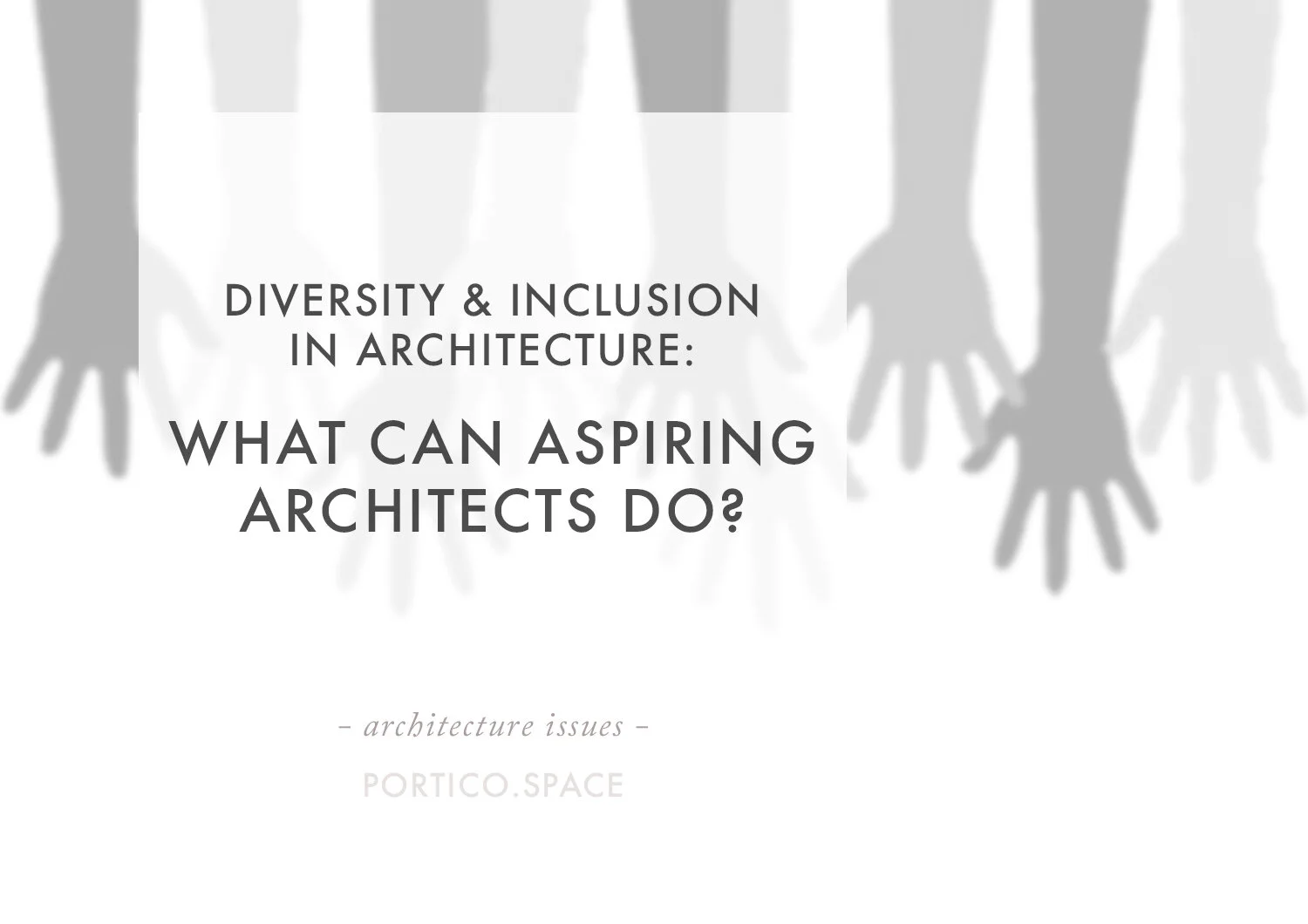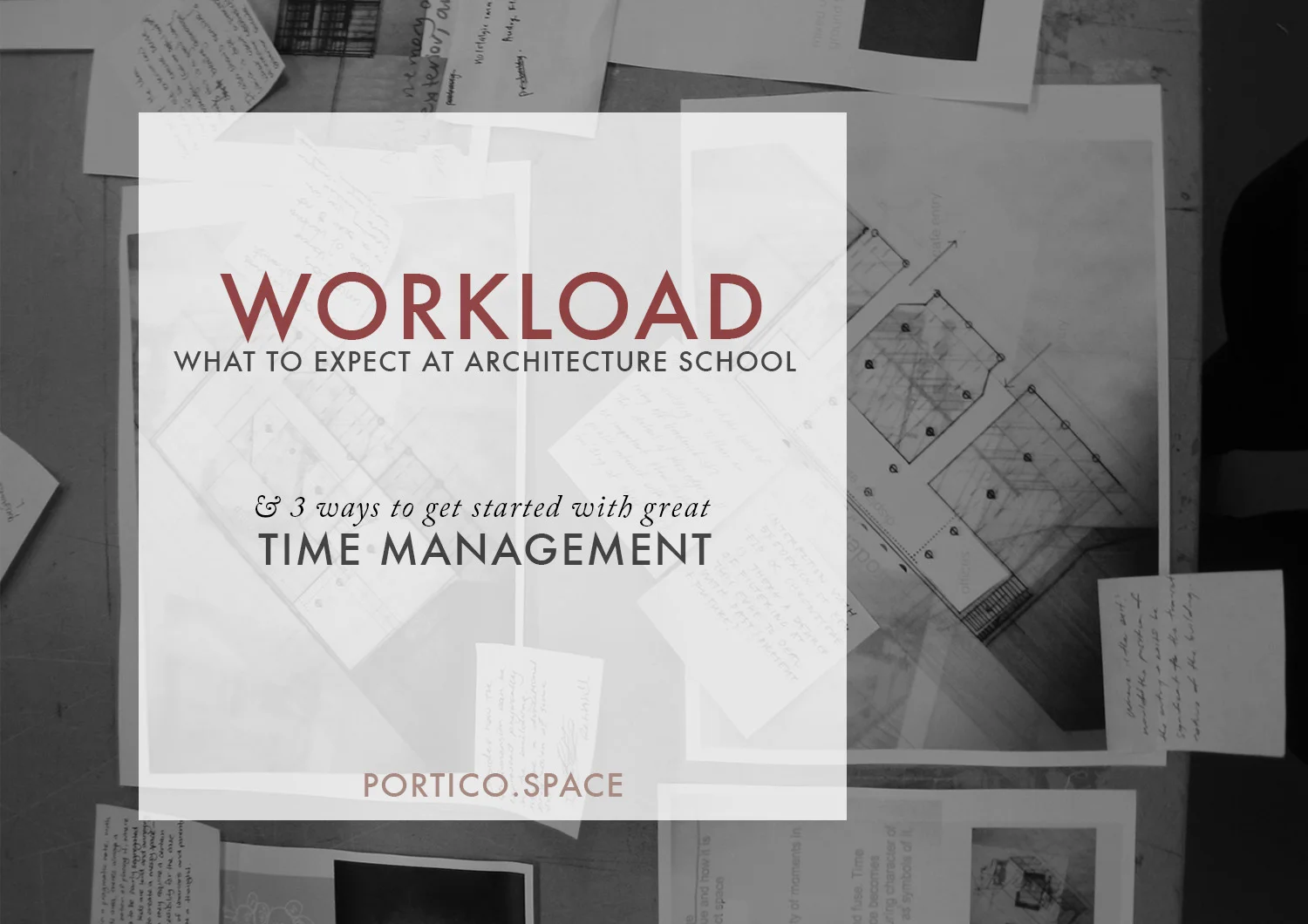Diversity & Inclusion in the Architectural Profession - for students and aspiring architects
In March 2018, in the wake of the Me Too movement, Editor-in-Chief of Architect Magazine Ned Cramer published an open letter to 'the men of architecture' . He started out bluntly, laying out the landscape of the profession with one simple sentence:
“Gentlemen,
Let’s be honest: The architecture profession still smells like a men’s club.”
Of course, the need for diversity in architecture doesn’t stop at gender - its just that this has long been the most visible and articulated discussion. Fast forward to the end of May, 2018, and Diana Budds responded with a call to action for individual responsibility and collective democratic rebuilding of the profession.
These calls - among others - have led to worldwide growth and interest in networks, policies and agendas aimed at addressing these issues. For example, in New Zealand, there have been a flurry of events and initiatives reflecting a growing broader conversation about diversity and inclusion. This is reflected in the growth of Architecture + Women NZ, and the formation of the cross-professional network The Diversity Agenda. In the United Kingdom, we have more seen updates to the Diversity and Inclusion policies and actions from the Architecture Foundation and RIBA.
These diversity and inclusion initiatives, and the broader narrative, tend to put the onus on companies, directors and educators to add diversity and inclusion to the list of things they manage. In doing so, diversity often becomes something to be ticked off, probably in the easiest, most marketable way possible. Maybe that is an unfair assessment of those practices and institutions that are working hard to effect change - but the reality is that at a strategic level diversity and inclusiveness will always sit alongside other KPIs and business goals.
DIVERSITY & INCLUSION FOR ASPIRING ARCHITECTS
So if most of the narrative of diversity and inclusion is around what the profession can do, what businesses can do, and what universities can do - where is the conversation aboutwhat aspiring architects can do?
diversity and inclusion isn’t only a job for the managers, for higher level strategists, OR for the leaders of our institutions. It is an everyday mission and practice for each of us, no matter what our role or contribution to the profession looks like or is labelled as.
In practice, big changes happen through the accumulation of millions of small changes. Those millions of small changes can be made by us - the global network of aspiring and emerging architects.
Worldwide, current students and new graduates are actively and openly critiquing the diversity and inclusion of the profession. This movement is evidence of a broader values-based shift. Questions of gender, race, economic status and background are no longer pushed aside, becoming instead central to our mainstream discussions.
This swing is powerful - but I also worry that for young aspiring architects leading the charge could be tiring, and that we could lose momentum almost as soon as we start. And, while it seems like these conversations are becoming more frequent and more inclusive, it is still the case that only certain people are in a position to safely speak, and that only certain voices are validated and heard.
For some students and recent graduates, taking individual responsibility might seem hopeless at best, and in a pressured economic situation, it could feel limiting to your professional opportunities.
So rather than waiting for diversity and inclusion changes to happen, what can we do as individuals, as aspiring architects, as active citizens with a dream of an inclusive and diverse future? And how can we do it without jeopardising how we operate within or alongside existing practices?
Act as a collective. We are more powerful together, our voices are amplified by others.
Highlight, share and support diverse practices, businesses and institutes - within and beyond architecture
Stand by your own values, methods & aesthetic, while also being open to difference
Together, we can change workplaces not just for ourselves, but for everyone.
Does lack of diversity in architecture really affect me?
Growing up in New Zealand I attended a private all-girls high school, and my year group at architecture school in Wellington had only slightly more males than females. While at university I had female professors, tutors and heads of school. In both settings, the majority of those women were Pakeha (white, European New Zealanders), like me. My mum, while not being a registered architect, had a design role within an architecture firm, and through her, I met many 'female architects' when I was growing up. When I envisioned 'architects', I found it pretty easy to include myself in this picture.
I thought it didn't affect me. I thought it wouldn't.
But lack of diversity affects every one of us. Even if you are part of the 'majority', the dominant culture, which in architecture is characterised as the White, Middle-Class (Middle-aged) Male, you are affected by limitations on diversity. And the affects only became apparent to be as I moved into practice, where I became part of and exposed to these external systems more than ever before.
Think you are creative? If you're working in an environment with limited diversity, how diverse do you think your ideas are?
Think the characteristic long hours work fine? If your partner was ill and you had to care for them, could you take the time off work to do so?
At a business level, the economic advantages of 'looking like your customer' are often discussed. But for those of us just starting out, the business outcomes probably aren't our primary concern. Within a business, having representation and role models that recognise the issues, priorities and complexities of being you, and navigating the world, is important to our individual career development.
HOW CAN YOU SEEK DIVERSITY IN ARCHITECTURE AS A STUDENT OR GRADUATE?
1.Identify your values.
Knowing what your own values are is the place to start. Know what matters to you, and what you are prepared to sacrifice or put to one side for some time. Also know that as people, our values are constantly shifting - and we grow through being open to new ideas. Often when we start out in our careers we need to compromise and find temporary ways to balance things. That's why a career is a journey, and your path takes shape through it. But at each step, it pays to be clear on what you're not prepared to compromise on.
Write down those sacrifices and refer back to them if you get stuck, or find yourself in situations you're not sure you're comfortable with in the future.
2. Identify your own subconscious biases.
After identifying your values, read between the lines to identify your subconscious biases. Are your values clear? What actions are you taking that do not align with your values? Is your practice at anyone else’s expense? Identify the biases the appear in your thoughts, and develop a practice of noting them and replacing them with a diversity-positive thought or even better, action.
3. Look around.
Getting a visual gauge on the make-up of the team you'll be working with is easy, but its also easy to overlook.
Look for a breadth, not just those who look like you. The more the organisation understands about diverse cultures, and different ways of thinking and doing things, the more opportunity there is likely to be for compassionate responses to other situations and scenarios that might arise.
4. Find out the stats.
Get the hard numbers to support your decision. Check these back up what you think you're seeing.
Unfortunately, it is often that case that the stats might reveal that while there are many female employees, or many people of colour in the workplace, or a great range of ages and diverse experiences, this diversity might be limited to specific roles (juniors or HR and administration staff), might not be in leadership roles, or might not be paid and supported equally despite performing equal roles. Dig as deep as you can, and ask questions where you feel able.
5. Ask about ThE policies.
Hearing the words people use to describe their Diversity & Inclusion policies (or whether they think they need one!) in person, on the spot, can be revealing.
Even where firms have policies in place, with a bit of careful reading between the lines you'll be able to tell from how people describe these whether these policies are face-value only, or if there is meaningful action behind those words.
And, if you feel uncomfortable asking this question, it is probably a sign that the Diversity & Inclusion policies are not being enacted.
6. ask for a mentor
The most difficult part about starting a new role - particularly when you are full of enthusiasm and careers dreams that come with a position change - can be when you are left to figure things out for yourself, or you aren’t given clear directions.
Ask, directly, for a mentor at the outset.
Having a mentor, particularly one who you do not report to, but who understands the wider offer environment, will give you a safe space to ask questions, to query policies, and to find support and guidance.
for more information
For others focused on changing forms of pedagogy and professional practice, have a look at:











